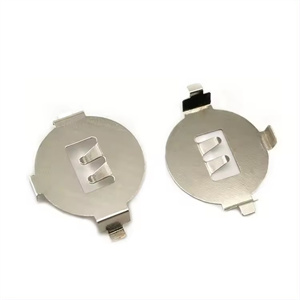Precision Stamping Parts in the manufacturing industry typically refer to metal parts that are precisely manufactured through stamping processes. These parts may require various surface treatments during or after manufacturing to meet specific performance or appearance requirements.
Among them, “blackening treatment” (also known as “blueing treatment” or “oxidation treatment”) is a commonly used surface treatment method, especially suitable for steel materials. Here are some basic information about blackening treatment:
The purpose of blackening treatment:
Anti corrosion: By forming a dense oxide film on Precision Stamping Parts, the corrosion resistance of the parts is improved.
Improve appearance: Make the surface of Precision Stamping Parts appear dark blue or black to improve appearance.
Increase wear resistance: The oxide film can provide a certain degree of wear resistance for Precision Stamping Parts.
The process of blackening treatment:
Cleaning: First, remove oil, rust, and oxides from the surface of Precision Stamping Parts.
Alkaline oxidation: Put the cleaned Precision Stamping Parts into a solution containing oxidants (such as a mixture of sodium hydroxide and sodium nitrite), and at a certain temperature and time, form a dense oxide film on the surface of the parts.
Cleaning and drying: Remove the oxidized Precision Stamping Parts from the solution, clean them to remove any residual chemical solution, and dry them.
Subsequent treatment (optional): As needed, the Precision Stamping Parts that have been blackened can be subjected to subsequent treatments such as oiling and painting to further improve their corrosion resistance or appearance.
Notes:
Control process parameters: Process parameters such as oxidant concentration, temperature, and processing time have a significant impact on the effectiveness of blackening treatment and require strict control.
Environmental protection: The chemical solutions used in the blackening process may cause pollution to the environment, and appropriate environmental protection measures need to be taken.
Subsequent processing: The blackened parts may be subject to wear or damage from the oxide film during storage and use, therefore requiring regular maintenance or reprocessing.
In summary, blackening treatment is an effective surface treatment method that can improve the corrosion resistance, appearance, and wear resistance of precision stamped parts. However, in practical applications, attention needs to be paid to controlling process parameters, protecting the environment, and carrying out subsequent treatments.
